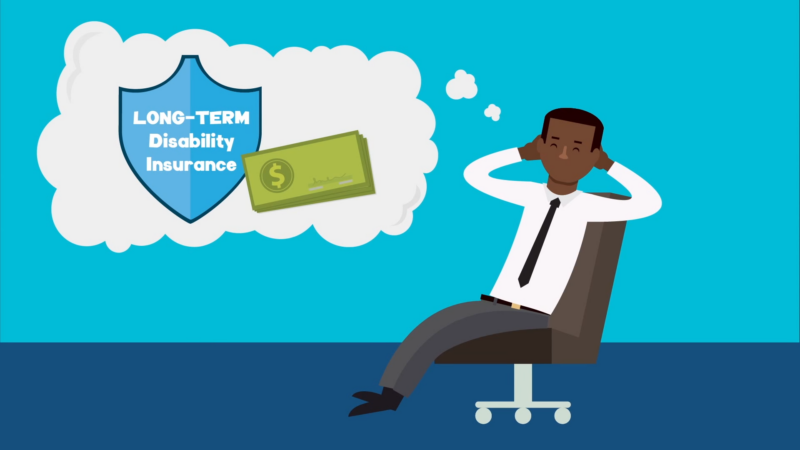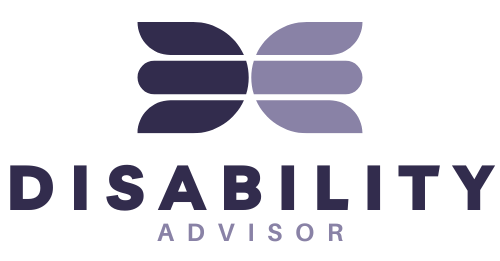Imagine waking up one day to find that you’re suddenly unable to work due to an illness or injury. How would you manage your expenses and maintain your lifestyle?
Disability insurance is designed to help in these situations by replacing part of your income if you can’t work due to health issues.
It’s a key part of financial planning that ensures you and your family stay financially stable during tough times.
Many people think only those with physical jobs need disability insurance, but anyone can benefit from it. Even if you have a desk job, an illness or accident could leave you unable to work for a long period. Disability insurance covers a portion of your salary, so you can focus on recovery without worrying about money.
Long-term disability insurance usually replaces 60% to 70% of your base salary and can last for several years or until retirement age.
This makes it important for everyone, no matter your job or income level.
The Importance of Disability Insurance

It acts as a financial safeguard, helping you manage expenses even when you’re not earning a paycheck.
Whether you work in a physical job or a desk job, accidents and illnesses can happen to anyone. Disability insurance covers a portion of your income, typically 60% to 70%, helping you maintain your lifestyle.
Consider this: if you make $300,000 a year, disability insurance may cost around 1%-3% of your income, or between $250 and $750 a month. This relatively small amount can protect you from potentially significant financial strain.
Key Reasons to Have Disability Insurance
- Income Protection: Shields you from loss of income due to unexpected health issues.
- Peace of Mind: Provides financial security, allowing you to focus on recovery.
- Affordable: Generally costs a small percentage of your annual income.
Disability insurance is also vital for those with high incomes. The more you earn, the more critical it becomes to protect that income.
Even a short period without earnings can impact your financial stability.
Types of Disability Insurance

There are two main types:
- Short-term disability insurance: Typically replaces 60% to 70% of your base salary for a few months up to one year.
- Long-term disability insurance: Generally replaces 40% to 60% of your base salary and can last several years or even until retirement.
Key Components
When selecting a policy, consider these essential components:
- Benefit Amount: The percentage of your income that the policy will replace.
- Benefit Period: The duration for which benefits are payable.
- Premiums: The monthly cost of the policy, which can vary based on age, income, and health.
What Affects Premiums?
Your premiums can be impacted by:
- Age: Younger people generally pay lower premiums.
- Health: Those in good health often receive lower rates.
- Income: Higher income can lead to higher premiums due to larger benefit amounts.
Understanding these aspects helps you choose a disability insurance policy that best suits your needs.
Costs and Considerations

It’s essential to look at costs and various factors that can influence your decision.
The cost of disability insurance varies based on age, health status, and income.
A healthy 25-year-old might pay $20 to $25 per month for coverage.
In contrast, a 55-year-old with health issues earning $120,000 annually might pay $100 or more per month.
Type of policy also affects the cost. Individual plans can often range from 1% to 4% of your annual income. It’s usually more affordable to get coverage through a group plan if your employer offers it.
Group disability insurance generally has lower premiums, but it’s not portable. If you leave your job, you usually can’t take the policy with you.
Length of coverage impacts costs too. Short-term disability insurance typically replaces 40% to 60% of your base salary for a few months to a year. Long-term disability insurance usually replaces 60% to 70% of your base salary.
Understanding these figures and factors is crucial for making an informed decision. Budgeting for premiums and evaluating how different policies align with your needs can help you effectively manage the costs and benefits of disability insurance. Ensure you evaluate your specific situation to find the best coverage option for you.
Process

Understanding the disability insurance process is crucial for securing the benefits you need. This process involves several steps and careful consideration of various factors.
Step 1: Evaluate Your Current Expenses
Begin by calculating your monthly expenses. Include items such as mortgage or rent, utilities, groceries, and transportation.
Step 2: Identify the Necessary Coverage
Determine the portion of your income that needs protection. Typically, short-term disability insurance replaces 60% to 70% of base salary, while long-term disability insurance covers 40% to 60%.
Step 3: Gather Required Documentation
Be prepared to submit extensive paperwork. You will need health records proving a healthcare provider’s diagnosis of physical or mental impairment.
Step 4: Understand Your Eligibility
Eligibility for Social Security Disability Insurance (SSDI) or other benefits requires meeting specific criteria. Ensure you have a thorough understanding of these requirements.
Workplace Disability Insurance

Workplace disability insurance is often a valuable benefit offered by employers. It typically comes in two forms: short-term and long-term disability insurance.
Short-term disability insurance covers temporary disabilities and generally pays out for three to six months. Meanwhile, long-term disability insurance can cover you for a year or more, sometimes extending all the way to retirement.
Short-Term Disability Insurance
- Duration: 3 to 6 months, sometimes up to a year
- Coverage: Typically replaces around 60% to 70% of your salary
- Payment Frequency: Bi-weekly or monthly
Long-Term Disability Insurance
- Duration: More than a year, potentially up to retirement
- Coverage: Typically replaces around 40% to 60% of your salary
- Payment Frequency: Monthly
Many organizations offer these benefits at little to no cost to their employees. Employer-sponsored disability insurance can serve as a safety net, ensuring that you have a steady income stream in the event you are unable to work due to illness or injury. It’s also often easier and cheaper to get disability insurance through your employer than on your own.
Your employer’s disability insurance may not cover everything you need. It’s important to understand the specifics of your coverage to determine if additional private disability insurance might be necessary.
Bottom Line

Disability insurance is a vital component of financial planning that offers peace of mind and financial security. No matter your occupation or income level, the risk of illness or injury is universal, and having disability insurance can shield you from the significant financial strain that can accompany an unexpected health issue.
By covering a substantial portion of your salary, it allows you to focus on recovery without the added stress of managing expenses.
To protect your income, consider evaluating your current expenses, understanding the necessary coverage, and gathering the required documentation. Additionally, assess the specific benefits provided by your employer’s disability insurance and determine if supplemental private insurance is needed.
Remember, the cost of premiums is generally a small percentage of your income, making disability insurance an affordable safeguard against potential financial instability. Investing in disability insurance ensures that you and your family remain financially stable during challenging times, providing the reassurance that you can maintain your lifestyle and focus on your health.







